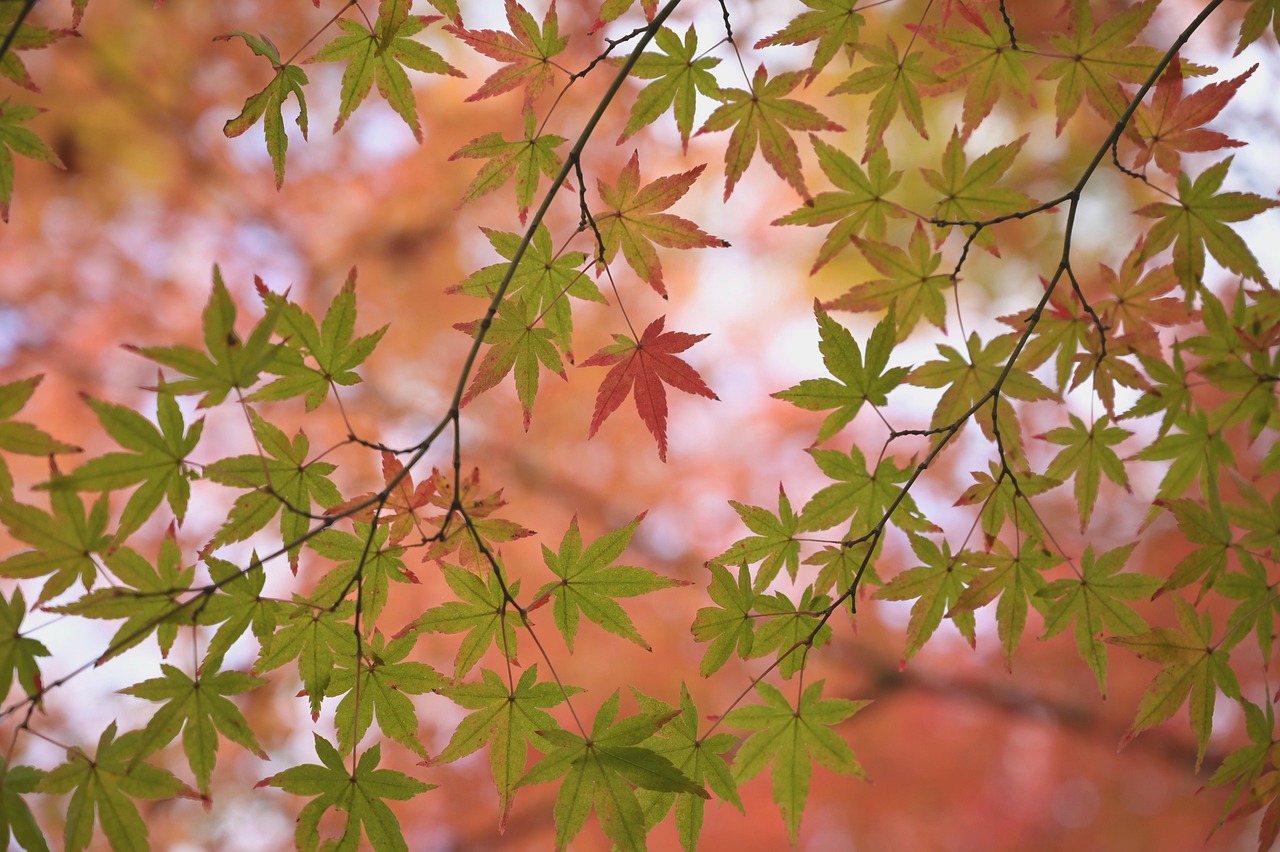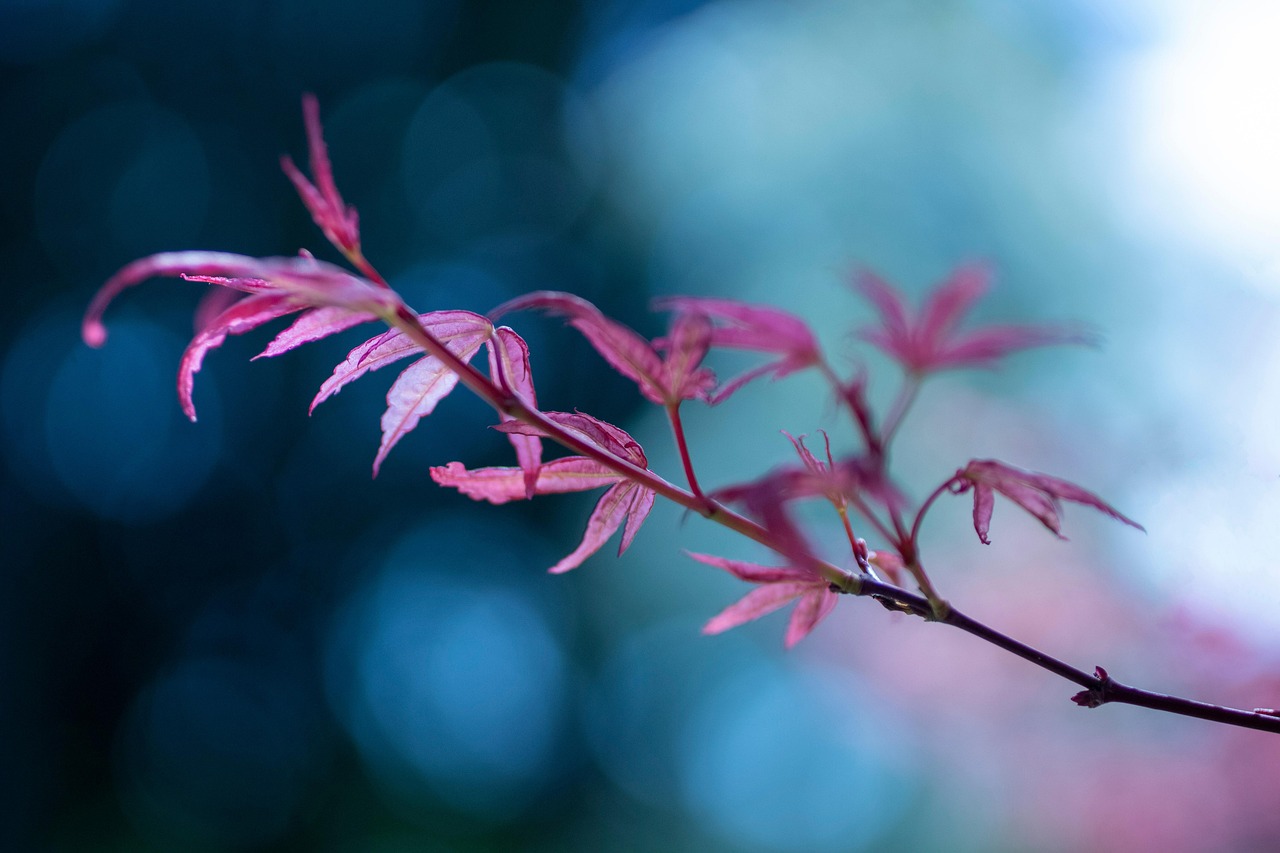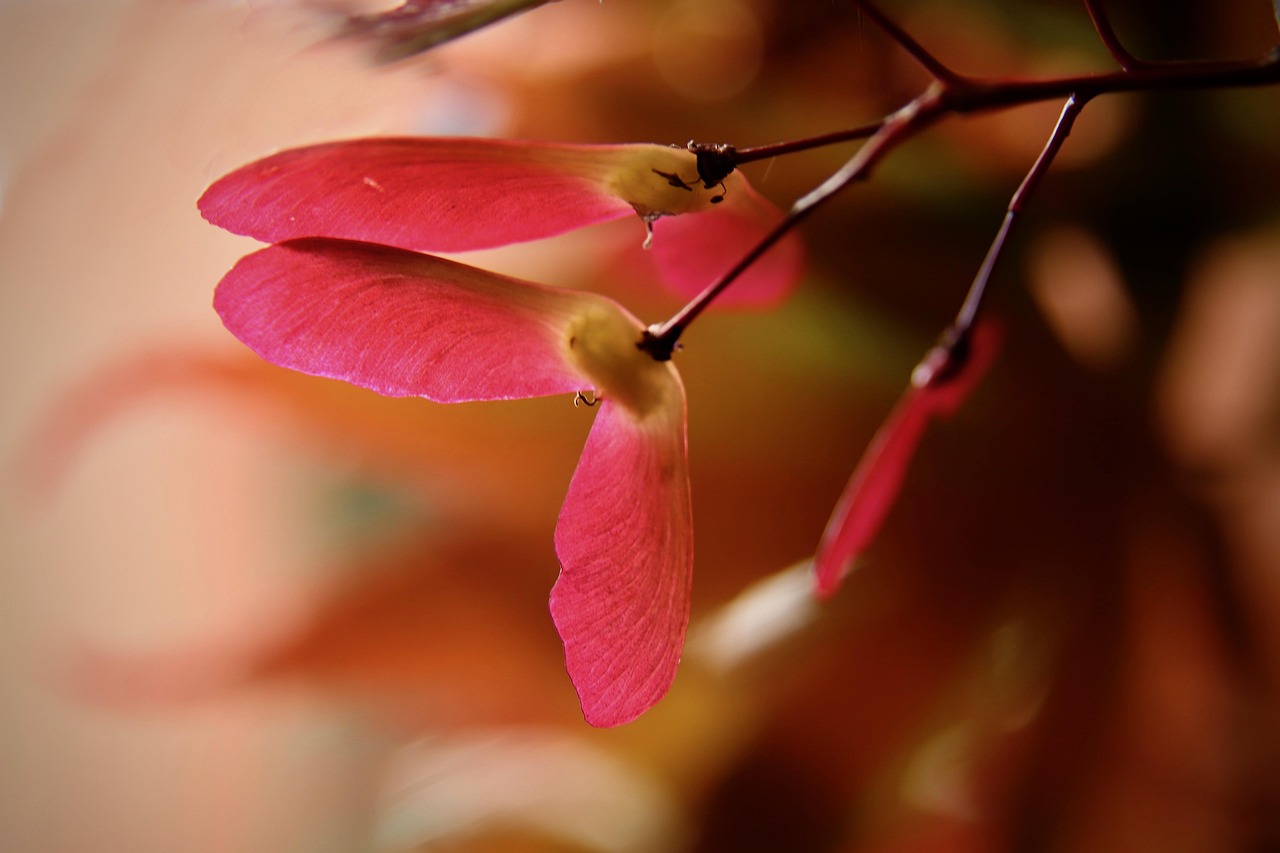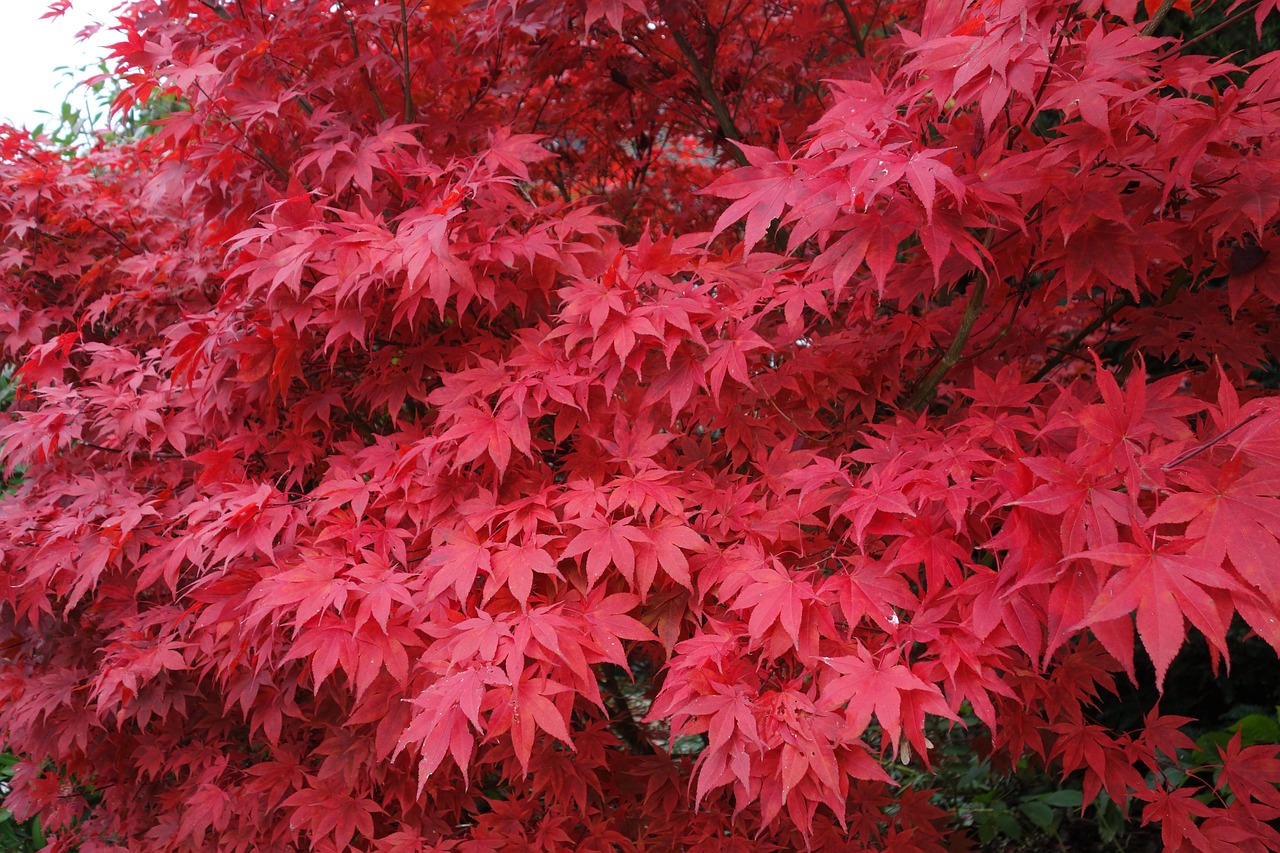Pruning Japanese maple trees is essential for enhancing their stunning red foliage. Proper pruning techniques promote healthy growth, improve shape, and increase sunlight exposure, which intensifies the color of the leaves.
Japanese maple trees (Acer palmatum) are cherished for their vibrant colors and delicate foliage. These trees, native to Japan, Korea, and China, have become popular in gardens and landscapes worldwide. Their breathtaking autumn hues range from rich reds to brilliant oranges, attracting garden enthusiasts. However, to maintain their beauty and vitality, regular pruning is crucial.

Understanding the best practices for pruning Japanese maples can significantly impact their appearance and health. These trees typically grow in a graceful, layered structure. Pruning helps to enhance this natural form while also allowing for better air circulation and light penetration. This article will explore the importance of pruning, the best times to prune, and effective techniques to achieve stunning results.
The Importance of Pruning Japanese Maple Trees
Pruning serves several purposes for Japanese maples:
- Enhancing Aesthetics: Well-pruned trees exhibit a more attractive shape, showcasing their unique branching structure.
- Promoting Health: Removing dead or diseased branches prevents the spread of pathogens and encourages new growth.
- Improving Light Exposure: Thinning out crowded branches allows sunlight to reach more leaves, which can enhance the color of the foliage.
- Controlling Size: Regular pruning helps manage the tree’s size, making it suitable for various garden spaces.
In addition to these benefits, pruning can help prevent potential hazards. Overgrown branches may pose risks during storms or high winds. Regular maintenance helps reduce these risks by keeping the tree healthy and manageable.

Best Times to Prune
Timing is critical when it comes to pruning Japanese maple trees. The ideal times for pruning are late winter to early spring before new growth begins. This period allows you to see the tree’s structure clearly, making it easier to identify which branches need attention.
Here are some key points regarding the timing of pruning:
- Late Winter to Early Spring: This is the best time for major pruning. The tree is still dormant, reducing stress on the plant.
- Post-Bloom: Light pruning can be done after the leaves have fully developed in late summer or early fall to remove any unwanted growth without compromising the tree’s energy.
- Avoid Late Fall Pruning: Pruning too late in the year can expose fresh cuts to winter damage, making the tree susceptible to disease.
Effective Pruning Techniques
Pruning Japanese maples effectively requires careful consideration of techniques. Here are some methods that will help you achieve optimal results:

Thinning Cuts
This technique involves removing entire branches back to their point of origin. Thinning cuts improve airflow within the canopy and reduce competition for light.
Heading Cuts
Heading cuts involve cutting back a branch to a bud or another branch. This technique encourages bushier growth in younger trees while maintaining shape in older ones.
Cleaning Up
Regularly remove dead, damaged, or crossing branches. This type of maintenance will improve the overall health of your tree.

Avoiding Topping
Avoid topping your Japanese maple. Topping can lead to unsightly growth patterns and weaken the tree over time. Instead, focus on maintaining its natural shape.
Tools Needed for Pruning
Using the right tools can make a significant difference in your pruning process. Here are some recommended tools:
| Tool | Description |
|---|---|
| Hand Pruners | Ideal for small branches and precise cuts. |
| Loppers | Useful for larger branches with greater leverage. |
| Saw | A pruning saw is necessary for thicker branches that hand pruners cannot handle. |
| Gloves | Protect your hands while working with sharp tools and branches. |
Selecting the proper tools will ensure clean cuts and reduce stress on the tree. Always sterilize your tools before use to prevent the spread of disease.
By understanding these fundamental aspects of pruning Japanese maple trees, gardeners can enhance their beauty and ensure vibrant red foliage during the growing season. Proper techniques combined with timely action will lead to stunning results in any landscape design.
Common Mistakes to Avoid When Pruning Japanese Maple Trees
Pruning is an art, and when it comes to Japanese maple trees, certain mistakes can lead to unsatisfactory results or even harm the tree. Understanding these common pitfalls will help you achieve the best outcomes.
- Over-Pruning: Removing too many branches at once can shock the tree. This leads to stress, which may cause poor growth or even death. Aim for no more than 25% of the tree’s foliage during a single pruning session.
- Ignoring Branch Structure: Cutting branches without considering their natural structure can create an unattractive shape. Always prune to maintain the tree’s natural form.
- Pruning at the Wrong Time: Timing is essential. Pruning during late fall or winter can expose the tree to cold damage. Stick to late winter or early spring for major cuts.
- Using Dull Tools: Dull tools can crush branches instead of making clean cuts. Always ensure your tools are sharp and well-maintained.
Understanding Japanese Maple Varieties
There are numerous varieties of Japanese maple, each with unique characteristics that may influence pruning techniques. Knowing the specific type of your tree will help tailor your approach.
| Variety | Description |
|---|---|
| Acer palmatum ‘Bloodgood’ | This variety is known for its deep red leaves that turn bright crimson in fall. It has a strong, upright growth habit. |
| Acer palmatum ‘Shirazz’ | This tree features variegated leaves with red edges and a green center. Pruning should focus on maintaining its shape. |
| Acer palmatum ‘Tamuke yama’ | This variety has finely dissected leaves and a more delicate appearance. Careful pruning is necessary to maintain its intricate shape. |
Each variety may require different pruning techniques. For instance, some may benefit from more aggressive thinning due to their denser foliage, while others may need minimal intervention to preserve their natural beauty.
Pruning Techniques for Different Ages of Japanese Maples
The age of your Japanese maple will influence how and when to prune. Here are techniques tailored for various stages of growth:
Young Trees (1-5 Years)
Young Japanese maples should be pruned primarily for shaping and establishing a strong structure. Focus on:
- Formative Pruning: Encourage an open center by removing crossing branches and selecting strong leaders.
- Light Thinning: Remove any weak or crowded branches to promote healthy growth.
Mature Trees (6-15 Years)
Mature trees may require maintenance pruning to keep their shape and health. Consider the following:
- Structural Pruning: Focus on maintaining the desired shape while removing dead or diseased wood.
- Sparse Thinning: Thin out branches that are too close together to improve airflow and light penetration.
Old Trees (15+ Years)
Old trees need careful handling to avoid shock and damage. Pruning should be minimal but strategic:
- Selective Pruning: Remove only dead or damaged branches. Avoid heavy pruning that alters the tree’s shape.
- Restorative Pruning: If the tree is overgrown, consider gradual thinning over several seasons rather than a drastic cut.
Post-Pruning Care for Japanese Maples
After pruning, proper care is essential to ensure your Japanese maple thrives. Here are some tips:
- Watering: Ensure the tree receives sufficient water, especially during dry spells. Newly cut areas may need extra hydration to recover.
- Mulching: Apply a layer of organic mulch around the base of the tree. This helps retain moisture and suppress weeds.
- Pest Monitoring: Keep an eye out for pests or diseases that may take advantage of the stress caused by pruning. Early detection is crucial.
Caring for your tree post-pruning not only promotes recovery but also contributes to its overall health and vibrancy. Healthy trees are more likely to exhibit stunning red foliage during the autumn season, enhancing your landscape’s aesthetic appeal.
By understanding the nuances of pruning and care, you can ensure that your Japanese maple trees remain healthy and beautiful throughout their lives, providing unparalleled color during the fall months.
Seasonal Care for Japanese Maple Trees
Beyond pruning, seasonal care is crucial for maintaining the health and vibrancy of Japanese maple trees. Each season brings unique challenges and opportunities for care.
Spring Care
As the growing season begins, Japanese maples require attention to promote strong growth and vibrant foliage.
- Fertilization: Apply a balanced, slow-release fertilizer in early spring. This provides essential nutrients that support new growth.
- Watering:** Ensure consistent moisture as new leaves emerge. A deep watering once a week is often sufficient, especially if rainfall is scarce.
- Pest Inspection: Check for common pests such as aphids and scale. Early intervention can prevent significant damage.
Summer Care
Summer is typically warm, and maintaining proper care during this time is vital for your tree’s health.
- Mulching: Refresh the mulch layer around the base. This aids in moisture retention and temperature regulation.
- Pruning for Shape: Light summer pruning can be conducted to maintain shape and remove any unwanted growth without stressing the tree.
- Shading: If necessary, provide shade during extreme heat to protect delicate leaves from scorching.
Autumn Care
Autumn is a beautiful time for Japanese maples as their leaves change color. However, care during this season is essential as the tree prepares for winter.
- Leaf Cleanup: Regularly rake fallen leaves to prevent fungal diseases and pests from overwintering.
- Final Watering: Ensure that your tree receives adequate water before winter sets in. This helps the tree enter dormancy with sufficient moisture levels.
- Fertilizer Application: Consider applying a winterizing fertilizer in late autumn to prepare the tree for the colder months.
Winter Care
Winter poses several challenges for Japanese maples, especially in colder regions. Proper care can help protect these delicate trees.
- Protection from Cold: In areas with harsh winters, consider wrapping the tree with burlap or using anti-desiccant sprays to protect against extreme temperatures and wind damage.
- Watering During Thaws: If there are warm spells, ensure the tree is watered adequately to prevent dehydration.
- Avoid Heavy Snow Accumulation: Gently brush off heavy snow accumulations from branches to prevent breakage.
Understanding Foliage Color Changes
The vibrant red foliage of Japanese maple trees is one of their most attractive features. Understanding the factors that influence color can help you achieve stunning results.
Factors Influencing Foliage Color
- Genetics: Different varieties of Japanese maples exhibit varying colors based on their genetic makeup. Some are bred specifically for deep red foliage.
- Light Exposure: Trees that receive ample sunlight tend to have more vibrant colors. Ensure your maple is positioned to maximize sunlight throughout the day.
- Soil Quality: Well-draining soil rich in organic matter promotes healthy root systems, supporting colorful foliage. Conduct soil tests to understand nutrient levels and pH balance.
- Watering Practices: Consistent watering without over-saturation will encourage healthy growth. Under-watered trees may display dull foliage.
The Role of Temperature
The temperature plays a significant role in foliage coloration, particularly in the autumn months.
- Crisp Nights: Cool nights coupled with sunny days enhance red pigmentation in leaves due to increased anthocyanin production.
- Drought Stress: Mild drought conditions just prior to leaf drop can intensify colors, but be cautious not to stress the tree excessively.
Pest and Disease Management
Pest and disease issues can significantly affect the health and appearance of Japanese maple trees. Being proactive is essential for management.
Common Pests
| Pest | Description | Treatment |
|---|---|---|
| Aphids | Small insects that feed on sap, leading to curled leaves and stunted growth. | Introduce ladybugs or apply insecticidal soap if populations are high. |
| Scale Insects | Tiny pests that attach to branches and suck sap, causing yellowing leaves. | Use horticultural oils or insecticidal soap to control infestations. |
| Japanese Beetles | Pests that skeletonize leaves, leading to unsightly foliage. | Handpick beetles or use traps; insecticides may also be effective. |
Common Diseases
- Verticillium Wilt: A fungal disease that affects the vascular system, leading to wilting and discoloration. Ensure good drainage and avoid overwatering to minimize risks.
- Leaf Spot: Fungal infections that cause dark spots on leaves. Remove affected foliage and apply fungicides if necessary.
- Canker Diseases: These can cause dieback on branches. Prune out affected areas and maintain tree health to prevent further infection.
By understanding these seasonal needs, color factors, and pest management strategies, you can cultivate healthy Japanese maple trees that showcase stunning red foliage year after year, enriching your outdoor space with beauty and elegance.
Enhancing the Landscape with Japanese Maples
Japanese maple trees are not only beautiful but also versatile. They can serve as focal points, provide shade, or complement other plants in your garden. Understanding their growth habits and needs can help you design a stunning landscape that highlights their unique features.
Companion Planting
Choosing the right plants to accompany your Japanese maple can enhance its beauty and support its health. Consider the following companion plants:
- Hostas: These shade-loving perennials thrive in similar conditions and provide lush foliage that contrasts nicely with the delicate leaves of the maple.
- Ferns: Ferns add texture and fill in shaded areas around the tree, creating a woodland feel.
- Azaleas and Rhododendrons: These flowering shrubs provide seasonal color that complements the vibrant foliage of Japanese maples.
- Ornamental Grasses: Grasses can add height and movement to the garden, creating visual interest alongside the more stately appearance of the maple.
When selecting companions, consider their light and water requirements. Ensuring compatibility will lead to a thriving garden ecosystem.
Creating a Maple-Centric Garden Design
Designing a garden centered around Japanese maples involves thoughtful planning. Here are some tips to create an inviting and harmonious landscape:
- Layering: Use varying heights and plant types to create layers. Taller plants can be placed in the back, while smaller ones can enhance the foreground.
- Color Coordination: Select plants with complementary colors. The rich reds and oranges of the maple’s leaves can be paired with softer greens or pastel flowers.
- Seasonal Interest: Incorporate plants that provide year-round interest. Choose spring-blooming flowers, summer perennials, and fall foliage to ensure beauty in every season.
Caring for Your Japanese Maple Year-Round
Year-round care is essential to keeping your Japanese maple healthy and beautiful. Regular monitoring and maintenance will help you to notice any issues early and take corrective actions. Here are additional care tips:
Monitoring Soil Health
The health of your soil directly impacts the well-being of your Japanese maple. Conduct regular soil tests to assess pH levels and nutrient content. Amend your soil as needed to ensure it remains rich in organic matter and suitable for growth.
Water Management
Water management is critical for Japanese maples, especially during dry spells. Here are best practices:
- Avoid Overwatering: Ensure proper drainage to prevent root rot. Japanese maples prefer moist but well-drained soil.
- Water Early: Water in the morning to reduce evaporation loss and allow moisture to reach the roots effectively.
- Use Soaker Hoses: If watering by hand, consider using soaker hoses to deliver water directly to the roots.
Final Thoughts
Caring for Japanese maple trees involves understanding their unique needs and maintaining proper practices throughout the year. Pruning is a key component of this care, allowing you to shape your tree while promoting vibrant foliage. Regular seasonal care, pest management, and companion planting enhance their beauty and health, contributing positively to your garden’s aesthetic.
The stunning red foliage of Japanese maples can transform any outdoor space into a picturesque landscape. By following the guidelines outlined in this article, you can ensure that your trees flourish, providing years of beauty and enjoyment. Whether you are an experienced gardener or just starting, the rewards of cultivating these magnificent trees are well worth the effort.
In conclusion, with proper pruning techniques, seasonal care, pest management strategies, and thoughtful companion planting, you can create a thriving environment for your Japanese maple trees. Embrace the beauty they bring, and enjoy the vibrant display of colors that will enhance your landscape each year.
